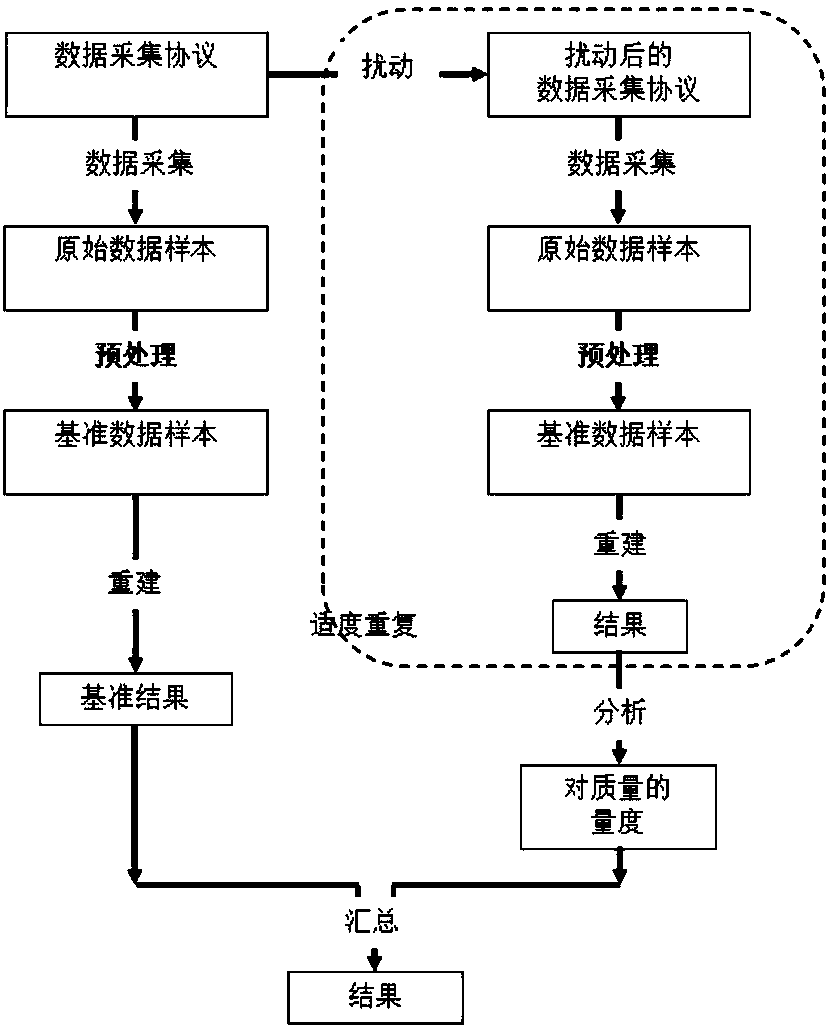Modeling and validation methods for compressed sensing and MRI
An imaging method and sampling mode technology, applied in the computer field, can solve the problems of masking, complicated setting process, lack of guidance, etc., and achieve the effect of improving performance
- Summary
- Abstract
- Description
- Claims
- Application Information
AI Technical Summary
Problems solved by technology
Method used
Image
Examples
example 1
[0057] Taking NMR as an example, image 3 shows the improved compressed perception after the introduction of the L-test. In the acceleration of phase encoding in two-dimensional magnetic resonance imaging of the brain, the k-space grid with a sampling size of 256x256 is used, and several sampling modes are used, which correspond to different acceleration factors, the radius of the central area of the fully sampled k-space, and the probability density function ,As follows. Example 1: 2 times acceleration, r=0.32; Example 2: 4 times acceleration, r=0.32; Example 3: 2 times acceleration, r=0; Example 4: 4 times acceleration, r=0.02. image 3 Column 1 shows the results of compressed sensing reconstruction. image 3 Column 2 shows the "deviation from linearity" profile (Equation 1) obtained by testing each voxel in the labeled region with L. Note the near-zero bias in Case 1, the larger biases in Cases 2 (higher acceleration) and 3 (smaller fully sampled central regions), and ...
PUM
 Login to View More
Login to View More Abstract
Description
Claims
Application Information
 Login to View More
Login to View More - R&D
- Intellectual Property
- Life Sciences
- Materials
- Tech Scout
- Unparalleled Data Quality
- Higher Quality Content
- 60% Fewer Hallucinations
Browse by: Latest US Patents, China's latest patents, Technical Efficacy Thesaurus, Application Domain, Technology Topic, Popular Technical Reports.
© 2025 PatSnap. All rights reserved.Legal|Privacy policy|Modern Slavery Act Transparency Statement|Sitemap|About US| Contact US: help@patsnap.com



